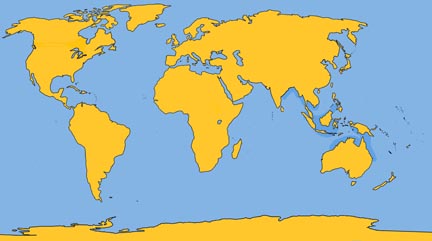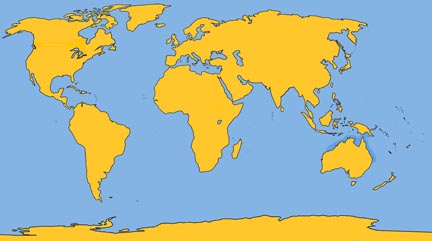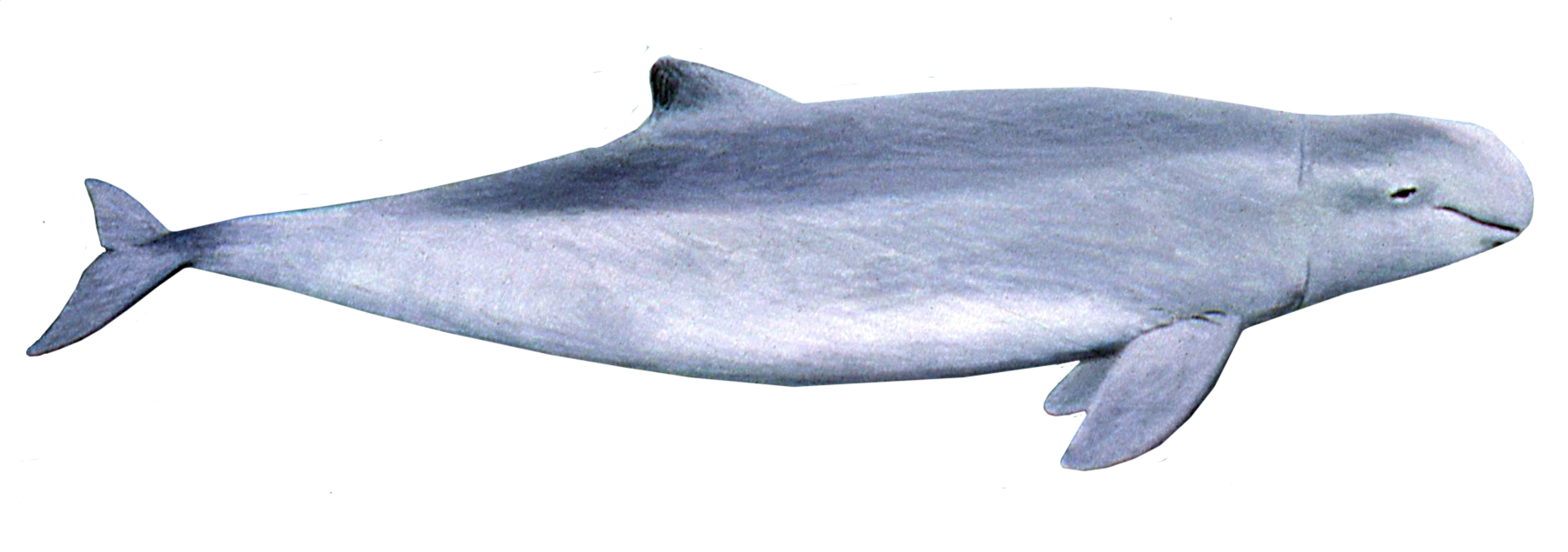Irrawaddy Dolphin
Family: Delphinidae
Genus: Orcaella
Species: O. brevirostris (Gray, 1866)
Australian Snubfin Dolphin
Family: Delphinidae
Genus: Orcaella
Species: O. heinsohni (Beasley, Robertson, Arnold, 2005)
Taxonomic Note: Although many now consider the Australian snubfin dolphin a separate species, the similarities to the Irrawaddy dolphin are so definite that we have included both in this chapter. Some researchers recognize two sub-species of the Irrawaddy dolphin. They are Port of Vizagapatarn, India, Orcaella brevirostris; in the Irrawaddy River, Orcaella brevirostris fluminalis. There has been an effort underway to place both species in the family Monodontidae.
The Irrawaddy dolphin inhabits freshwater as comfortably as coastal marine water. The animals travel upstream 10 miles (16 km) or more and are well suited for river travel with their flexible bodies and necks and paddle-shaped flippers. Irrawaddy dolphins are slow-swimming animals that live exclusively in warm, tropical waters where they have been observed jumping clear of the water, as well as twisting and rolling while swimming on or near the surface.
The snubfin dolphin probably lives its life in the same manner as the Irrawaddy dolphin, but that it negotiates its own particular geographic location.
Note: Descriptions below are for both species, except where noted.
Physical Description: Both of these animals are remarkable alike, with subtle physiological variations. The main reasons why some researchers are designating the snubfin dolphin as a new species comes from its color variation and DNA analysis. The body is long and somewhat stocky with a narrow peduncle region. The head is blunt. The rostrum consists merely of lips that appear mildly swollen. The blowhole is located slightly left of the forehead. The eyes are very well developed. The neck is distinct and functional; the animal can turn its head without turning its body.
Color: The Irrawaddy dolphin is very dark gray, slightly lighter ventrally. The snubfin dolphin has a three-toned white to gray color pattern
Fins and Flukes: The small, rounded, slightly falcate dorsal fin is located well to the rear of the mid-back region, with a distinct ridge running from dorsal fin to flukes. Paddle-shaped flippers slightly pointed at the tips, and slightly smaller with the snubfin. Narrow flukes are well spread and pointed at the tips.
Length and Weight: Reaches 7 ft (2.1 m) and 220 lb (100 kg).
Teeth: 15 to 17 are located on each side of upper jaw, 12 to 14 slightly larger teeth on each side of lower jaw.
Feeding: Fish, crustaceans, cephalopods, and fish eggs.
Breathing and Diving: Dives average about a minute in duration. Occasionally the animals rise to make low, horizontal leaps from the surface. They also have been observed “spy-hopping”, in which just the head protrudes from the water.
Mating and Breeding: Little is known. On July 4, 1979, the first baby Irrawaddy dolphin was born in captivity (see photos) in Djakarta. At birth, it was 25.5 in (65 cm) long and weighed 11 lb (5 kg).
Herding: Groups of no more than 10 individuals.
Distribution: Irrawaddy dolphins are coastal from the Bay of Bengal east to New Guinea; far up the Mekong, Irrawaddy, and Ganges River. The snubfin lives in the coastal waters of northern Australia and possibly Papua, New Guinea.
Migration: No noticeable migration, but in certain regions the Irrawaddy dolphin’s movements are dictated by the rising and falling of the rivers.
Natural History Notes: These are very quiet shy animals. They have been observed swimming at speeds up to 15 to 18 mph (20 to 25 kph.











